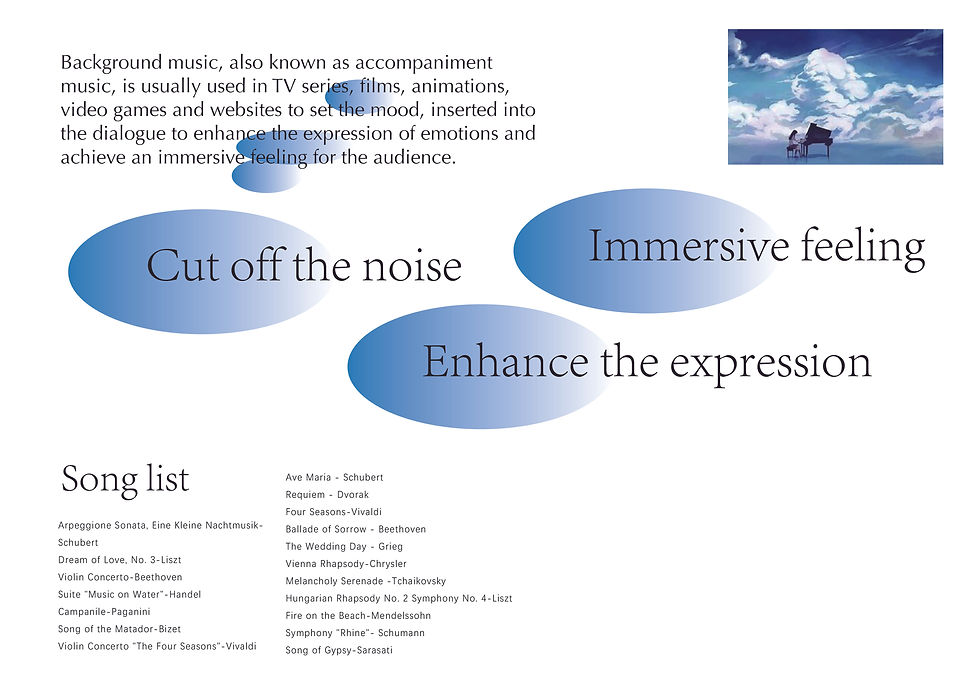Reflection of the cloud
- yiwen yang

- 2022年12月7日
- 讀畢需時 2 分鐘
In the hospital project I focused on the psychological problems of doctors and patients and proposed a chat to allow them to release stress, face their pain and engage in a healing process for themselves and for others. We hoped that this approach would form a healing social link, a platform for social emotional healing among the collective participants of the congregation - hence the research behind my proposal to build a social public interaction board. (See the last page of the portfolio) However, this idea is still somewhat vague and lacking in practice due to time constraints. Therefore, I hope to try and print off my interactive posters in the next few days and put them up in various parts of the city and collect feedback.
I have looked back at the beginning and end of this project and think that the visual output of our research still needs more progress. In terms of my typeface, the overall style does not depart from the framework of the reference work (see Blog) and lacks innovation in style and form. The exploration of typefaces will be the main issue that I need to investigate later. The exploration of patterns is also limited to the accumulation and deconstruction of elements, lacking a deeper philosophical interpretation, and lacking in graphic atmosphere and infectious power.


Secondly, our offline campaign for the chatroom has not yet moved away from the traditional - and we should combine this with the exhibition approach of the previous studio campaign - but this requires more practical considerations: subject matter, location, scale, cost, and predictable footfall, which will be the subject of our research.
We should also think about the possibility of an 'online' chat room: so far our audience has been limited to hospital patients and families, but in fact there are many more people who need chat rooms. We would therefore like to think about using the app as a vehicle to create virtual online chat rooms, with more humanized features through AR technology: for example, using big data to detect personalized behavioral and emotional patterns of users and creating a virtual chatbot that could also play the role of a 'listener'. This model is ideal for people who are too busy to come to the hospital for a chat.


In addition, our chat format is 'back-to-back conversations', which I am proud of, but we should explore more chat formats, such as the 'role-play' chat that I first proposed, where the chatting partners take on the role of the other person. This helps them to see things from the other person's point of view. However, because of the complexity of the practicalities of doing this, we abandoned this direction. However, this does not detract from the fact that it is an interesting and effective idea.

Finally, in the research for the project, I focused on the literature, but this was somewhat of a paper exercise. We therefore preferred to follow up with direct dialogue with psychological professionals (psychological professionals or hospital staff) to deepen the functionality of our research again through practice.



留言